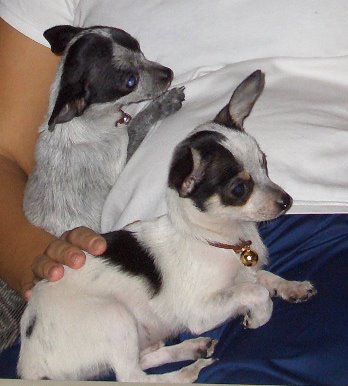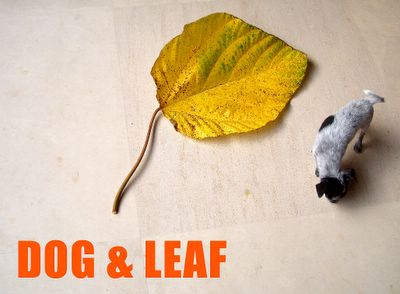The Discussion FOR / AGAINST STERILIZATION : Both Male & Females
Did you know?b. Each day 10,000 humans are born in the U.S. - and each day 70,000 puppies and kittens are born. As long as these birth rates exist, there will never be enough homes for all the animals. As a result, every year 4 to 6 million animals are euthanized because there are no homes for them.
c. What can you do to stop the suffering?
d. Spay and neuter your pet! In addition to saving lives, spaying and neutering can also drastically improve your pet's health and life expectancy. The idea that pets become fat or lazy when they are spayed or neutered is a myth. Sterilized pets lead healthier, longer lives. Spaying a female eliminates the possibility of uterine and ovarian cancer and greatly reduces the risk of breast cancer. Neutering a male reduces the risk of both prostate enlargement and prostate cancer. Neutering also will make your pet more affectionate and less likely to roam, get in fights, or become lost.
6.
Source : http://www.healthypet.com/library_view.aspx?ID=136&sid=1
NEUTERING YOUR PET We know that your pet is very important to you. A companion, a friend, and in a real sense a member of your family. In order to reduce the number of animals ending up in shelters or being euthanized, AAHA encourages you to discuss neutering your pet with your veterinarian. Together you can work as a team to help reduce the number of unwanted and abandoned animals.
Both male and female dogs and cats are mature enough to reproduce between the ages of six to nine months.
Female dogs generally go through an estrus or heat cycle every six months. This is accompanied by a proestrus or bleeding cycle prior to her true heat cycle in which she is very receptive to the advances of male dogs. This heat cycle may last for several days or up to three or four weeks. Often female dogs will experience some personality changes during heat cycles such as becoming short-tempered or anxious.
Female cats come into heat cycles every three to four weeks during certain times of the year. Many female cats will become nervous during these heat cycles and exhibit unusual behaviors such as rolling on the floor, furtively hiding, or wanting constant attention. Female cats often become quite vocal, too, meowing plaintively through their cycle.
Surgical neutering of female dogs and cats called ovariohysterectomy, completely eliminates all heat cycles and the accompanying unwanted bleeding cycle, nervousness, and desire to mate. Neutering your female dog or cat will also protect your pet from uterine infections and other diseases as well as difficult or dangerous pregnancies. Studies show that by neutering your female dog before her first heat cycle, you can greatly reduce her chances of developing mammary cancer later in life. The surgery includes the removal of the ovaries, fallopian tubes, and uterus.
Most male dogs and cats are ready and willing to reproduce by the time they are six to 12 months of age. There are able to breed consistently throughout the year or whenever they are exposed to a receptive female. Both male dogs and cats are prone to wander in search of romance and find themselves exposed to fighting with another animals or dangers such as cars. In addition, male cats are well-known to mark their territories by spraying ordorous urine on furniture, walls, shrubs, etc. Male dogs are sometimes equally anxious to mark their territories.
Surgical neutering of male dogs and cats, called orchiectomy, eliminated any reproductive behavior and reduces urine odor and the desire to spray. Your male dog or cat will continue to have his own unique personality. He will be less likely to roam and enjoy staying at home more. The surgery removes the testicles.
AAHA has an animal welfare position statement on record that reads as follows: "To reduce the overpopulation problem in companion animals, the American Animal Hospital Association supports neutering of cats and dogs as early as eight to 16 weeks of age in animal care and control facilities."
Deciding when is the best time to neuter your pet is a decision you should discuss with your veterinarian
Spay - Female SterilisationThis is a process where the female reproductive organs are removed in a simple operation. Performed under anesthetic so painless to the animal but beneficial in many ways. This prevents pregnancy and unwanted puppies.
Recovery time is fast and there will be no change in the dogs personality.
She will not come into heat or season and attract male dogs. Neuter - Male Sterilisation
This is a process where the male testicles are removed in a simple operation. Performed under anesthetic so painless to the animal but beneficial in many ways. This prevents a male dog impregnating numerous females. Contrary to the common myth a male dog will not get fat and lazy after the operation should proper dietary care be taken.
Good reasons to spay and neuter
Healthier Pets- Spaying or neutering increases your pet's chances for a longer, healthier life. Spaying your female pet before her first estrous cycle (that is, before she reaches sexual maturity) greatly reduces her chances of developing breast cancer and completely eliminates the threat of uterine and ovarian cancer and uterine infection, which are common occurrences in unaltered females.
Neutering your male dog or cat prevents testicular tumors and may prevent prostate problems. Neutering also decreases the possibility of perianal tumors and hernias, which are commonly observed in older, unaltered dogs. Because neutered cats are less likely to roam, the threat of abscesses caused by bites and diseases transmitted by fighting are greatly reduced.
Better family pets - Yes that's right they will be happier and better pets. An altered dog or cat is a better pet for your family. Males neutered early in life are less aggressive toward other males and are not distracted by females in heat. Therefore, a neutered male will be less tempted to leave your property and cross that dangerous street or motorway searching for a mate. Neutered males also are less likely to mark every one of your (or your neighbor's) expensive shrubs with his urine as well as inside the house.
Female dogs are cleaner in the home - When a female dog is in season she will pass fluid in the form of a bloody substance for about 10 days twice a year. This can stain furniture and carpets. Spaying eliminates this. Spaying your female pet eliminates the problem of stray males camping in your yard and decreases her desire to roam and breed.
Unwanted Puppies - If your female is spayed she will not become pregnant therefore you will not have to deal with unwanted puppies. Male dogs will not be able to impregnate females at will and you, as a responsible owner, can rest assured that you are not part of the increasing dog number problem but rather part of the solution.
Overpopulation - Each year, tens of thousands (approx. 30,000 in Ireland last year) of unwanted dogs and cats are euthanised (killed) in pounds across the country. Many pet orphans are the result of accidental breeding by free-roaming, unaltered pets. The more pets spayed or neutered, the fewer dogs and cats will have to be destroyed. Hundreds of dogs and cats are turned away from 'NO KILL' animal shelters each year because there is simply not enough room at to accommodate them.
Dangerous Dogs - Most male dogs involved in Road Traffic accidents are following the scent of a female. Many cases of female dogs who have been chased and attacked by other male dogs are seen in the Animal Shelters. If your dog is the cause of a road traffic accident or aggression causing injury to another animals you are responsible for loss or damage.
It is your duty to have your dog spayed or neutered as part of responsible ownership and vet care. It is best to have this done whether the dog is pedigree or cross breed young or mature. For more information you can contact us. See more at www.spayweekireland.com
8. Canine Neutering : Case Discussions : http://www.vetinfo.com/dneuter.html
9. http://www.superk9.com/article-doghealthcare14.asp













